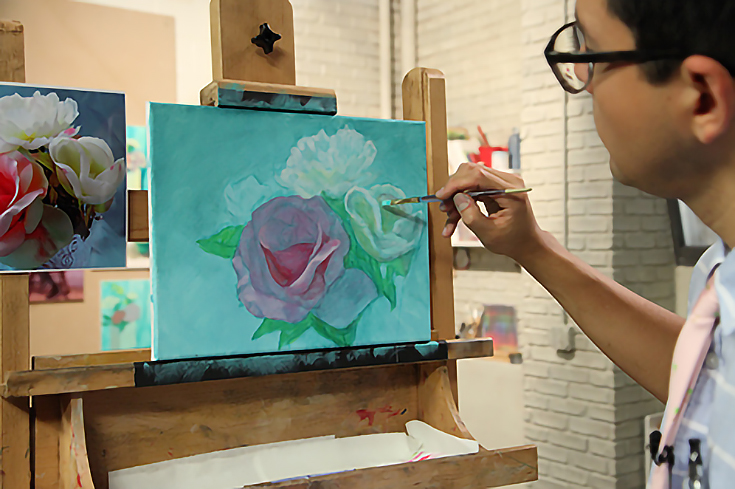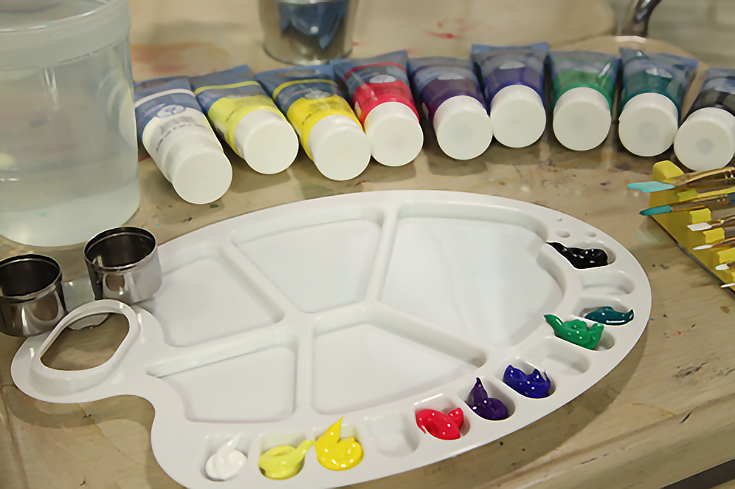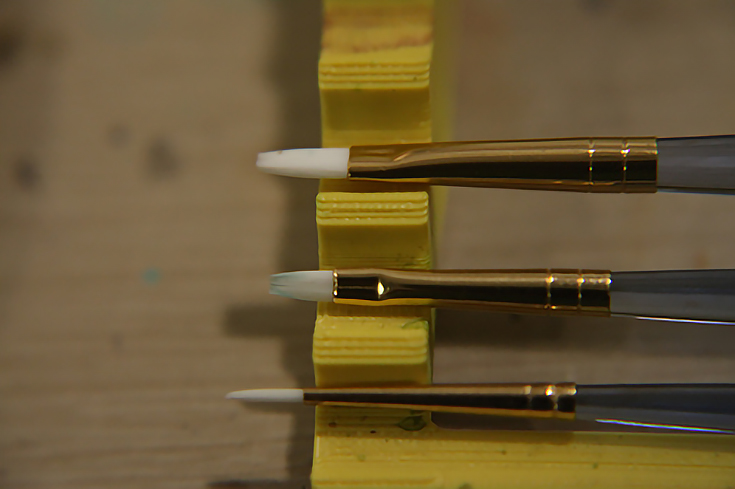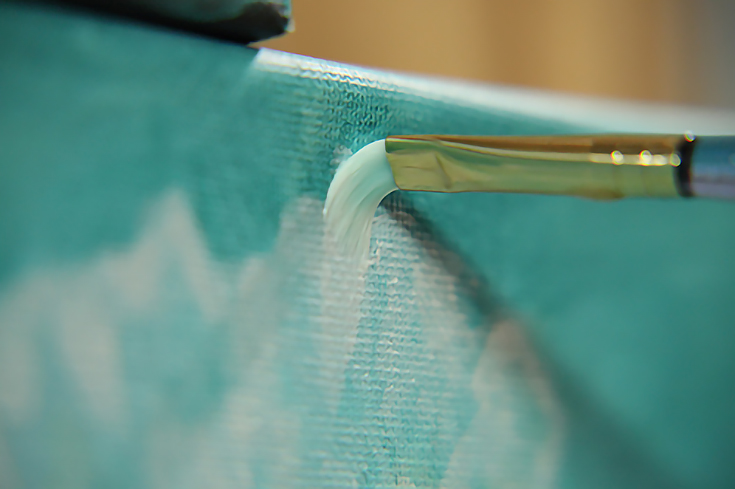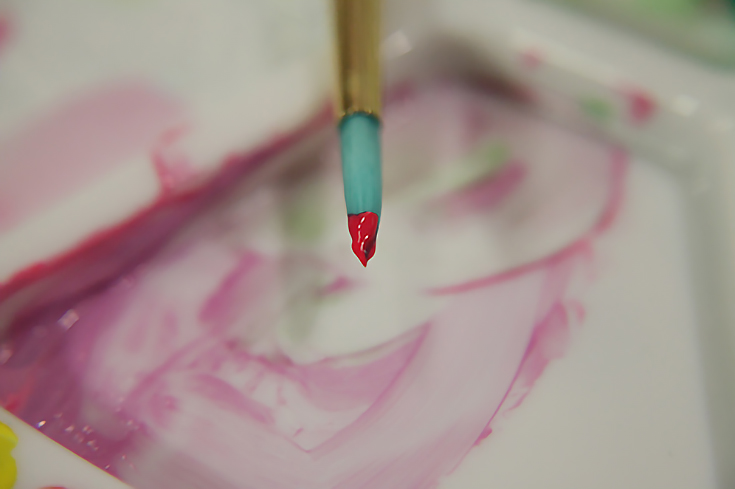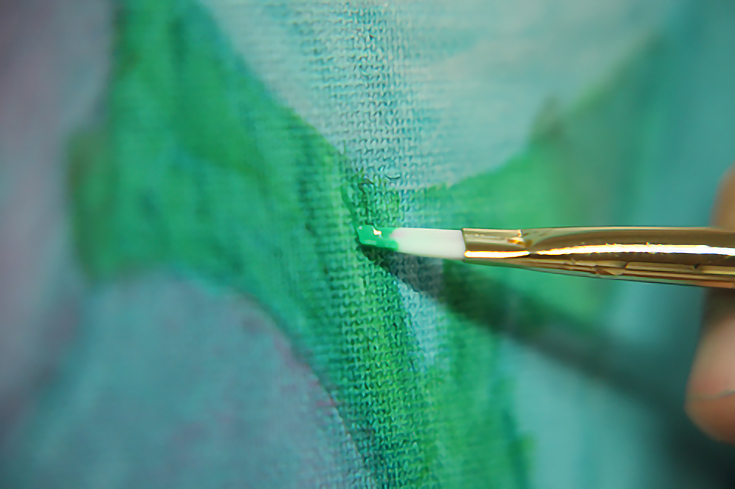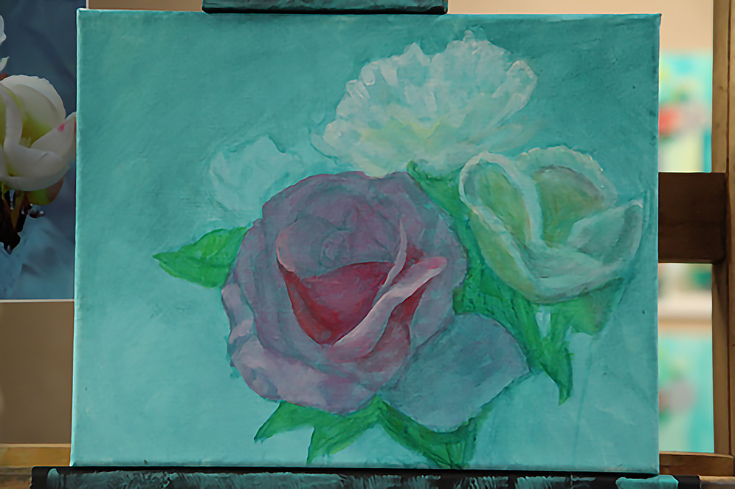Ever looked at a gorgeous floral still life and wished you could paint like that? Well here’s some good news—capturing the beauty of nature in vibrant acrylics may be easier than you think!
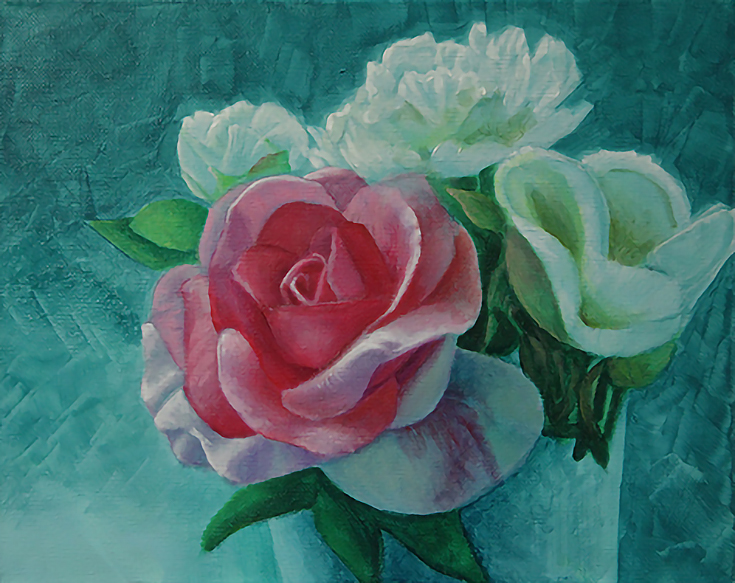
Follow along with today’s tutorial to begin creating a brilliant floral piece just like the one above, while learning techniques to block in colors (an important part of realistically painting any still life).
You’ll also get more help finishing up your painting with instructions from award-winning artist Micah Ganske when you sign up for his free online Craftsy class, Painting Flowers in Acrylic, which inspired this tutorial.
Keep in mind that the main goal of the “color-blocking” stage of your painting is to cover your canvas in color, loosely painting the basic shapes of your still life with mid-tone colors. So don’t worry too much about getting the details perfect.
Let’s get started!
1. Setting up your acrylic painting palette
It’s a good idea to add your acrylic paint to your palette from light to dark, as in a rainbow. This will help you keep track of where your colors are as you paint.
The more consistent you are with how you set up your palette, every time, the quicker you’ll be able to locate and mix colors. (Note: you may also want to separate black even further, to prevent it from mixing unintentionally with other colors.)
2. Mixing your specific colors and painting medium
Next, you’ll need to mix your colors to capture the right hues visible in your flowers. Use a flat brush like the ones below to get nice smooth coverage no matter what you’re painting.
If you don’t have the exact paint colors you need, you can mix standard acrylic colors to achieve your desired hues. (For example, mixing yellow and magenta to get a nice vibrant red.)
You’ll also want to add a dollop of “slow-drying” medium to all of your colors so they won’t dry too quickly. When doing so, use a 1:3 ratio of medium to paint.
Just be careful not to add too much medium—that will cause your paint to dry tacky.
3. Blocking in your flower shapes
Once you’ve painted in a solid background color for your florals, it’s time to block in your shapes. Paint a quick sketch, outlining the various leaves and petals of the florals. As you dive into painting white petals, magenta flowers, and green leaves over that solid background, you’ll discover how easy it is to use quick brushstrokes and gel medium to create lovely, translucent petals.
Let’s start with the white flowers—mix gel medium in with your white paint to thin it out a bit, creating a translucent glaze that you can apply right over your sketched outline. You might even add a bit of water to help your paint go on a bit easier, and to cover a larger area of your canvas with less paint.
Start brushing on a nice base layer and try to stay within the lines of your white flower. Keep in mind that this paint will dry a bit more translucent than it initially appears when you apply it, so don’t worry if it looks a little opaque at first.
After you get your initial layer of translucent white down, use your brush to add some smaller petal shapes over the top of that base layer. Those petals are what make these flowers so expressive and unique.
Remember, when working with white it’s easy for residual color on your brush to contaminate it, so be careful about that as we proceed through the next steps of your piece. When in doubt, wipe your brush before picking up additional color.
As you move on to the rose, start by mixing your magenta paint with a little bit of white paint, gel medium and water to achieve the translucence you need.
Aim to mix up an “average” color for your magenta layer. You don’t want the darkest or the lightest shade that will be represented within the whole piece, instead, you want a magenta shade somewhere in the middle. This will allow you to add highlights and shadows on top of this layer later.
Begin applying your magenta until you’ve covered the flower with a single layer.
Notice the areas that need a little more white and add a little white paint there to brighten it up a bit. Then blend that white paint with the colors adjoining the same area, bringing them together. And, make sure you go over your layers so you don’t have any ridges in your paint—the goal is a nice smooth coating.
You’ll probably also notice that some areas of your rose have a purple tinge, so do the same thing as before, but with purple. Mix in a little purple into the magenta color you already have, add a little bit of medium, and then apply your purple to those shadowy purple-magenta areas.
4. Blocking in the leaves
For the last part of this “blocking in” stage, mix a bit of yellow paint in with your green to make it livelier, and then apply the green on top of the spaces for your leaves.
As the vibrant green color of these leaves interacts with the purple in your flower, it will create a nice contrast and everything will start to stand out more (which you’ll also notice happening more and more as you layer additional color throughout your piece).
Once the leaves are in place, voilà, you’ve finished blocked in your painting! The major shapes are finished, and you’re ready to start painting in all the highlights, shadows, and extra details that a stunning still life needs.
To see all the steps to painting this brilliant floral still life, join award-winning artist Micah Ganske in his totally free online Craftsy class, Painting Flowers in Acrylic.
You’ll learn how to bring color, composition and essential techniques together to create an amazing acrylic work of art—take the class now for free!
This tutorial was written and sponsored by Craftsy. For more articles and tutorials, please visit their fine art blog.
This post may contain affiliate links.
